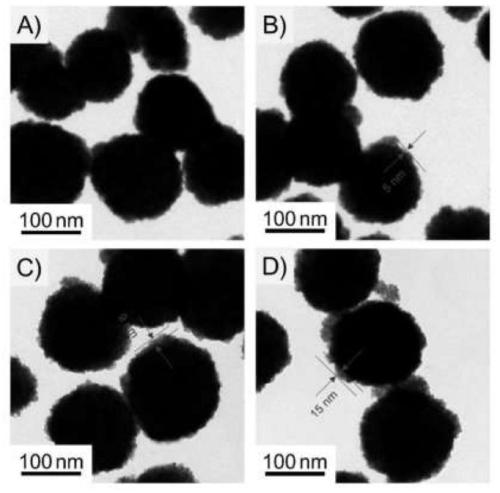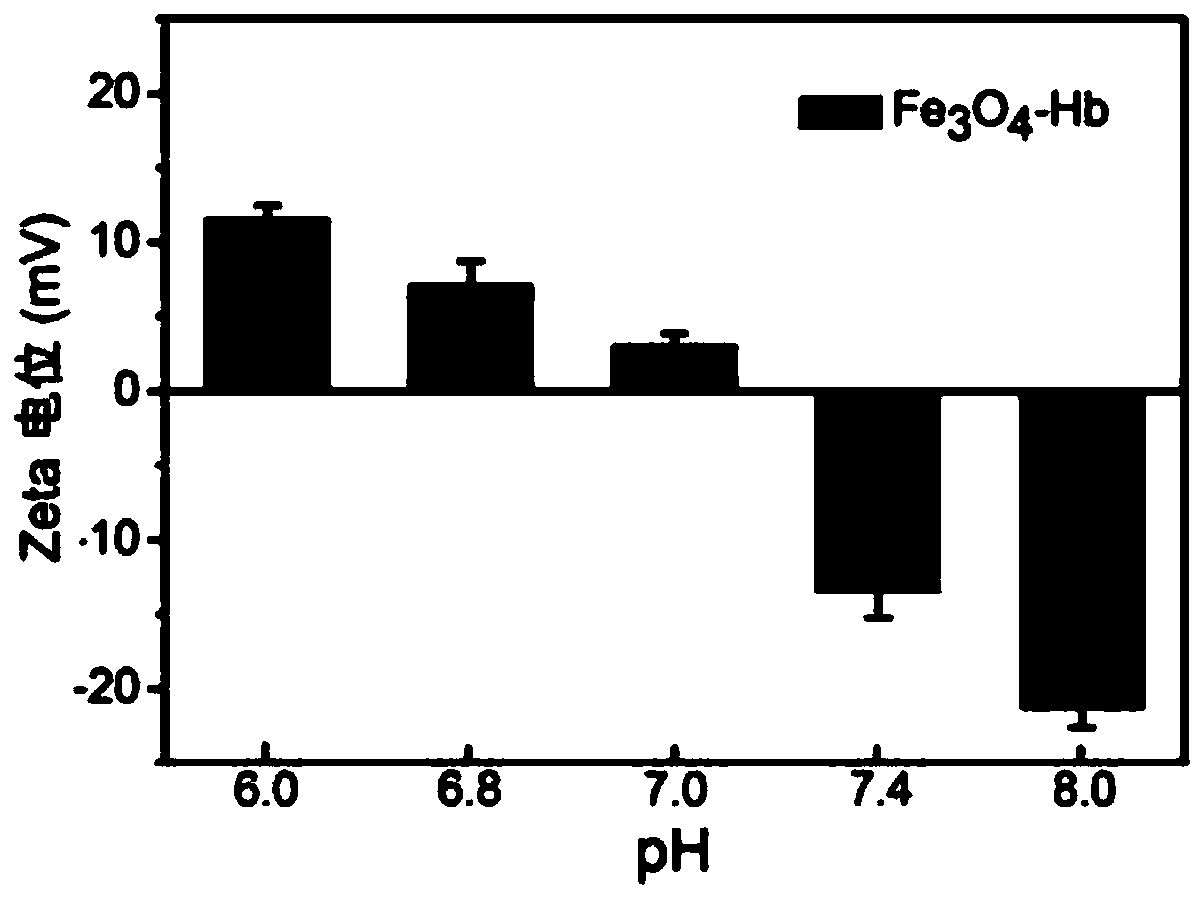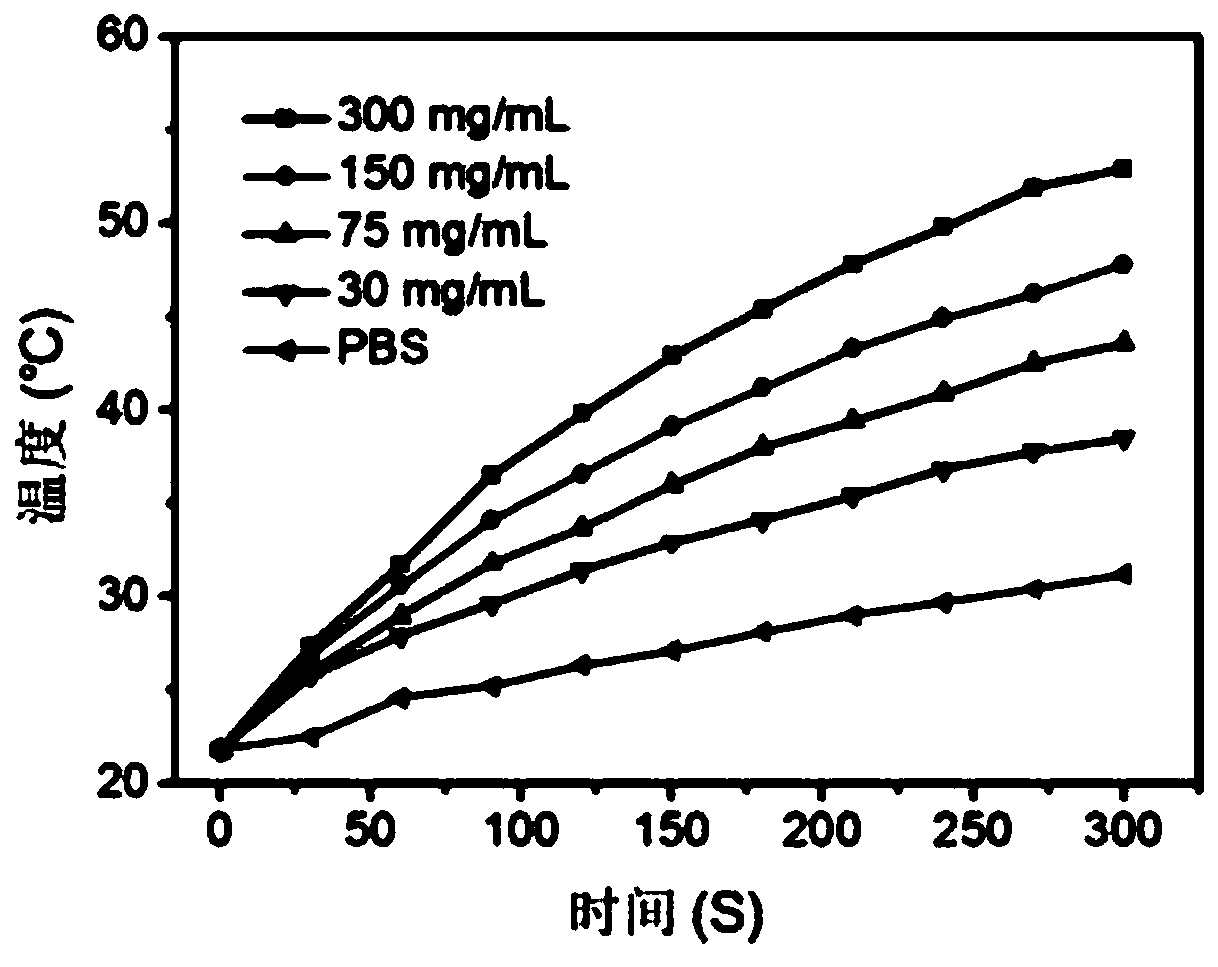pH-responsive iron ferric oxide nanoparticles and its preparation method and application
A technology of ferric tetroxide and nanoparticles, which is applied in microcapsules, pharmaceutical formulations, photodynamic therapy and other directions, can solve the problems of easily causing self-rejection, large toxic and side effects, and unsatisfactory treatment effect of rheumatoid arthritis. The effect of good near-infrared light absorption properties, low toxicity, and good application prospects
- Summary
- Abstract
- Description
- Claims
- Application Information
AI Technical Summary
Problems solved by technology
Method used
Image
Examples
Embodiment 1
[0031] Preparation and characterization of Fe3O4 nanoparticles:
[0032] Weigh 0.5g ferrous chloride tetrahydrate (FeCl 2 4H 2O), dissolve it in 25mL deionized water, stir in a magnetic stirrer (3000-3500r / min) to dissolve, after it is completely dissolved, quickly add 2.5mL concentrated ammonia water (NH 3 ·H 2 O) Oxidize at room temperature for 10 min with stirring, then add 5 mL of 0.02 mg / mL polyethyleneimine (PEI) alcohol solution, and continue stirring for 5 min. The mixed solution was placed in a reaction kettle and reacted at 120°C for 3h. After the reaction was completed, the product was collected with an external magnetic field to collect the black precipitate, and washed several times with ethanol and deionized water to obtain surface-modified amino group ferric iron tetroxide (Fe 3 o 4 ) nanoparticles; their morphology was characterized by transmission electron microscopy (JEM-100CXII). figure 1 Fe prepared as shown in A 3 o 4 Nanoparticles are uniform in s...
Embodiment 2
[0034] pH-responsive Fe 3 o 4 - Preparation of Hb nanoparticles (Hb layer thickness is 5nm) and characterization:
[0035] Take 0.5mL of 1mg / mL human hemoglobin (Hb) solution, add 2mM EDC and 5mM NHS, and react at room temperature for 15min. Then 1.4 µL of β-mercaptoethanol was added to terminate the EDC. Add 10 mL ferric oxide nanoparticle solution (1 mg / mL) and react at room temperature for 2 h. After the reaction, the product was repeatedly washed with an external magnetic field to obtain a pH-responsive Fe 3 o 4 - Hb nanoparticles. Its morphology was characterized by transmission electron microscope TEM (JEM-100CXII), such as figure 1 The shape shown in B is uniform and spherical, and the thickness of the Hb layer is 5 nm.
Embodiment 3
[0037] pH-responsive Fe 3 o 4 - Preparation of Hb nanoparticles (Hb layer thickness is 12nm) and characterization:
[0038] Take 1 mL of 1 mg / mL human hemoglobin (Hb) solution (the rest are the same as in Example 2). Its morphology was characterized by transmission electron microscope TEM (JEM-100CXII), such as figure 1 The morphology shown in C is uniform and spherical, and the thickness of the Hb layer is 9 nm.
PUM
| Property | Measurement | Unit |
|---|---|---|
| thickness | aaaaa | aaaaa |
| thickness | aaaaa | aaaaa |
| thickness | aaaaa | aaaaa |
Abstract
Description
Claims
Application Information
 Login to View More
Login to View More - R&D
- Intellectual Property
- Life Sciences
- Materials
- Tech Scout
- Unparalleled Data Quality
- Higher Quality Content
- 60% Fewer Hallucinations
Browse by: Latest US Patents, China's latest patents, Technical Efficacy Thesaurus, Application Domain, Technology Topic, Popular Technical Reports.
© 2025 PatSnap. All rights reserved.Legal|Privacy policy|Modern Slavery Act Transparency Statement|Sitemap|About US| Contact US: help@patsnap.com



